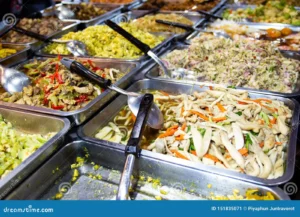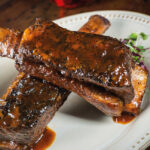Vacuum sealing is a first rate manner to boom the shelf life of food and reduce waste. With a food Saver, you may hold gadgets glowing inside the fridge for weeks or keep them within the freezer for months.
However, to get the maximum out of your sealer, it is essential to recognize the manner it really works and right strategies. This comprehensive manual will train you the whole thing you need to recognize about the use of your meals Saver vacuum sealing device like a pro.
What’s A Food Saver Vacuum Sealer
A food Saver is an appliance that gets rid of air from special plastic luggage earlier than sealing them close. through manner of developing a vacuum, it prolongs the lifespan of perishable food.
There are some exceptional manufacturers of meals Saver systems, but a number of the most popular include:
Food Saver: The original brand known for reliability and great customer service.
Enesco: An affordable option that still has high suction power.
Weston : A versatile countertop sealer that can handle large volumes.
Regardless of the brand, all Food Saver machines work using the same basic principles. They have a vacuum chamber where you place open bags before sealing.
When you press the vacuum button, the sealer sucks air out through tiny pores in the chamber’s sealing strip. It then quickly heat seals the bag closed, preserving the vacuum inside around the food.
Parts Of A Food Saver Vacuum Sealer
Let’s break down the main components of a typical Food Saver system:
Vacuum Chamber: Where you place open bags for vacuuming and sealing. Look for measurement markers here.
Lid: Closes the chamber during sealing. Lift to access bags after.
Sealing Strip: Thin, heated strip that seals bags shut. Must be clean for tight seals.
Bag Rollers : Feed bags in and out for vacuum sealing and storage.
Vacuum and Seal Buttons : Operate suction and heating functions.
Bag Cutter: Built in blade trims bags after sealing for food saver storage.
It’s important to familiarize yourself with each part to properly use your sealer. Let’s now look at chamber compatibility.
Choosing Food Saver Bags and Rolls
For the vacuum sealing process to work, you need specialized bags or rolls compatible with your machine.
There are a few main types:
Moisture/Dry Bags: General purpose bags for meats, cheeses, breads. Thick PVC material.
Canning Bags: Made for liquids, sauces, soups. Thinner material is boilable.
Jar Sealing Rings: Attach lids to mason jars for home canning projects.
Bags come precut or on rolls in various widths. Consider your typical portion sizes when choosing. Rolls offer more flexibility but bags are simpler. You can also get reusable or single use options reusable bags last years with proper care.
Now that you understand machine parts and bag options, let’s dive into preparing foods for vacuum sealing. Proper prep leads to longer shelf life.
Preparing Food for Vacuum Sealing
There are a few steps to take before placing items in bags:
Cool hot foods fully and dry surfaces of any wet foods to prevent condensation inside bags.
Remove as much air from packages, jars or containers as possible before sealing to vacuum bags.
For liquids, leave a 1-2 inch headspace at the top of jars or pouches.
Cut fresh meats, cheeses or breads into portions that will lay flat in bags without overlapping.
Freeze foods like sliced meats, chopped veggies before sealing to prevent crushing.
Open bags fully and place items towards the bottom third, leaving ample room at the top for vacuuming.
Take care with food placement and distribution of weight for an even seal. Proper preparation makes the actual sealing process quicker and more efficient.
The Vacuum Sealing Process
Now you’re ready to use your Food Saver.
Here are the basic steps:
Place the open end of the bag into the vacuum chamber against the sealing strip, leaving some excess hanging out.
Lower the lid and ensure it’s closed securely.
Press the vacuum button. Watch the bag shrink down around the food in 30 seconds or less.
Release the vacuum button once fully compressed.
Quickly seal the bag by pressing the seal button until it clicks off, about 2 seconds.
Lift the lid and remove the newly sealed package by its trimmed end.
Repeat with remaining items, making sure to change bags when switching between raw and cooked foods.
For containers, follow steps 1-4, halting vacuum before compression is complete to avoid crushing. Be gentle handling recently sealed packages as well. Practice makes perfect.
Storing Vacuum Sealed Foods
Properly storing sealed items is key to maximizing their extended freshness:
Refrigerate fresh meats, cheeses and produce for 2-3 weeks by placing bags on a shelf.
For longer freezer storage up to 6-12 months, lay bags flat in the freezer to prevent punctures when stacking other items.
Freeze refrigerated items within 3 days for peak quality.
Date all packages with a dry erase marker for easy identification.
Rotate stock, using oldest items first before they expire.
Thaw frozen foods overnight in the fridge for food safety.
Keep an organized system so you always know what’s on hand for meal planning convenience.
Applying these storage tips after vacuum sealing is sure to take advantage of your system’s full potential.
Frequently Asked Questions
Why is my bag not sealing?
Ensure the sealing strip is clean, bags are inserted properly against it, and you’re using compatible rolls/bags for your model.
How do I clean the sealing strip?
Unplug the sealer, wipe it down with a damp cloth then dry thoroughly. Avoid scratching with abrasives.
The vacuum isn’t strong, what’s wrong?
Check for kinks or clogs in tubing by detaching it from the sealer to view intake holes.
Will it damage frozen meats?
Only vacuum seal single cuts laid flat, not batches, as compression could crush items.
Are the reusable bags dishwasher safe?
No, hand wash only with mild soap to maintain the integrity of the PVC material over time.
What does it mean if the bag window fogged?
Your items are too wet and condensation built up inside the now trapped air space.
Conclusion
With practice of the techniques covered here, you’ll be an expert at maximizing your Food Saver vacuum sealer’s potential to preserve perishables longer. Remember to select the right compatible bags, properly prepare food items, follow sealing steps, and store packages under the proper storage conditions.
Do you have your next big batch of vacuumed meals planned yet? Now that you know how to use your machine like a pro, you can feel confident keeping your pantry and freezer fully stocked for months to come. Happy sealing!
















